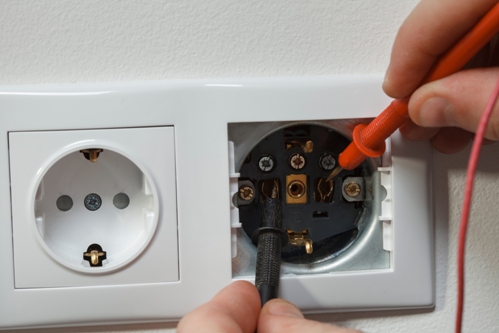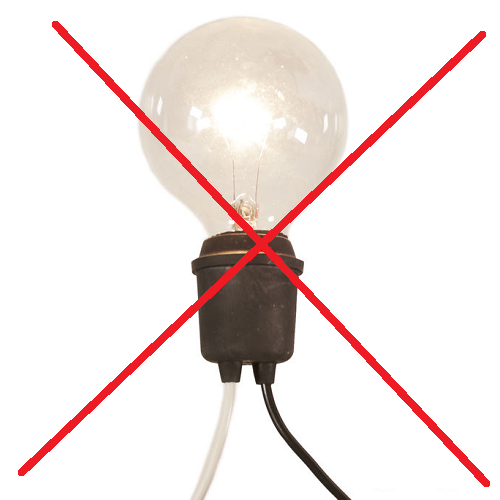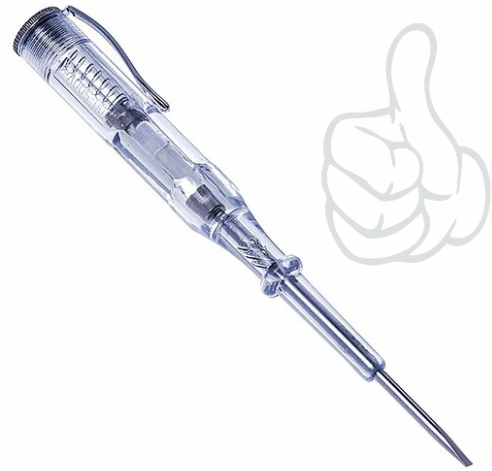Categories: Featured Articles » Sharing experience
Number of views: 20290
Comments on the article: 12
Why is the warning lamp dangerous and why is it prohibited by the rules
While the light is on, and all home electrical appliances are working, everything is fine, but as soon as the machine is knocked out, you have to find and fix the malfunction. Well, if the owner of the home is an experienced electrician, then he probably has a phase indicator in the form of a screwdriver in the middle of his home tool, or certainly multimeter.

But what if there is neither one nor the other in the household? Is there any other way to safely detect a malfunction in an electrical circuit?
As a rule, in such cases, some home craftsmen resort to the help of the so-called control lamp or "control", which, incidentally, is very unsafe and generally prohibited by safety regulations. For this reason, a phase indicator is still better to have on the farm.
But why is the warning lamp prohibited? Let's try to understand this in detail.
Incandescent lamps, which are usually used as the notorious warning lamp, have a bad habit of failing at the most unexpected moment and in the most nasty way.
The bulb spiral can burn out at the moment of switching on from exceeding the nominal voltage (220 V instead of 36 V or 380 V instead of 220 V), the spiral may burn out and not at the moment of switching on - from a power surge, the lamp can easily slip out of your hands and break, this moment may happen short circuitfinally, a person may be shocked in the event of an awkward movement or, again, due to a sudden explosion of the bulb for one of the above reasons.
And just because of frequent reconnections, the incandescent lamp is likely to quickly fail. In short, a warning lamp is not a reliable tool.

In table lamps or in other lighting fixtures, the bulb is always fixed securely in the holder, which, in turn, is mounted firmly in the ceiling. Such a lamp is installed strictly in its place based on its purpose.
Even if such a lighting device was turned on for business, the filament warms up, after which the lamp shines for a long time. No one flips a switch or shakes a lamp, creates extreme conditions for a lighting fixture.

But what do we get if we adapt an incandescent lamp, albeit with a cartridge, even with probes and with well insulated connections, as a control portable lamp, as a portable device? We actually get a lot of risks:
-
At first, the cold spiral of the lamp has a resistance 10 times less than in working condition, therefore, with constant on / off (while looking for a malfunction in the circuit), transients from the filament will quickly destroy it, in the end the lamp will suddenly explode and expose a person to danger of electric shock.
-
Secondly, the person himself may be mistaken. Suppose he accidentally takes a lamp at a nominal voltage of 36 volts, and installs it in his lamp holder. The lamp will definitely explode when connected to a network with a voltage of 220 volts. Danger again.
-
Thirdly, the glass of the lamp breaks easily with awkward movement. Let's say a person slipped, fell, or simply dropped a portable warning lamp from his hands. The lamp crashed, the fragments cut the man, and the malfunction with broken corks remained. As a result, the problems only increased.
-
Fourth, a person may inadvertently touch the live parts of a warning lamp with his hands or other parts of the body. If the probes of the control lamp are not sufficiently isolated, the risk of electric shock increases. The resistance of the filament of the lamp is such that even if part of the body enters the circuit in series, the impact will still be very dangerous.

Whether it’s at least indicator screwdriver. A current-limiting resistor and a neon bulb make the current through the body of a person holding such an indicator in their hands scanty, literally limited to a few microamps. In the normal mode of operation of the phase indicator, the weakest safe current closes through the human body to the ground.
This is completely safe, there is no longer any risk of getting under the mains voltage, and even to break such a device - you need to try very hard. Forget about the test lamp - use the phase indicator, it is designed specifically for the diagnosis of live circuits.
See also at i.electricianexp.com
:
